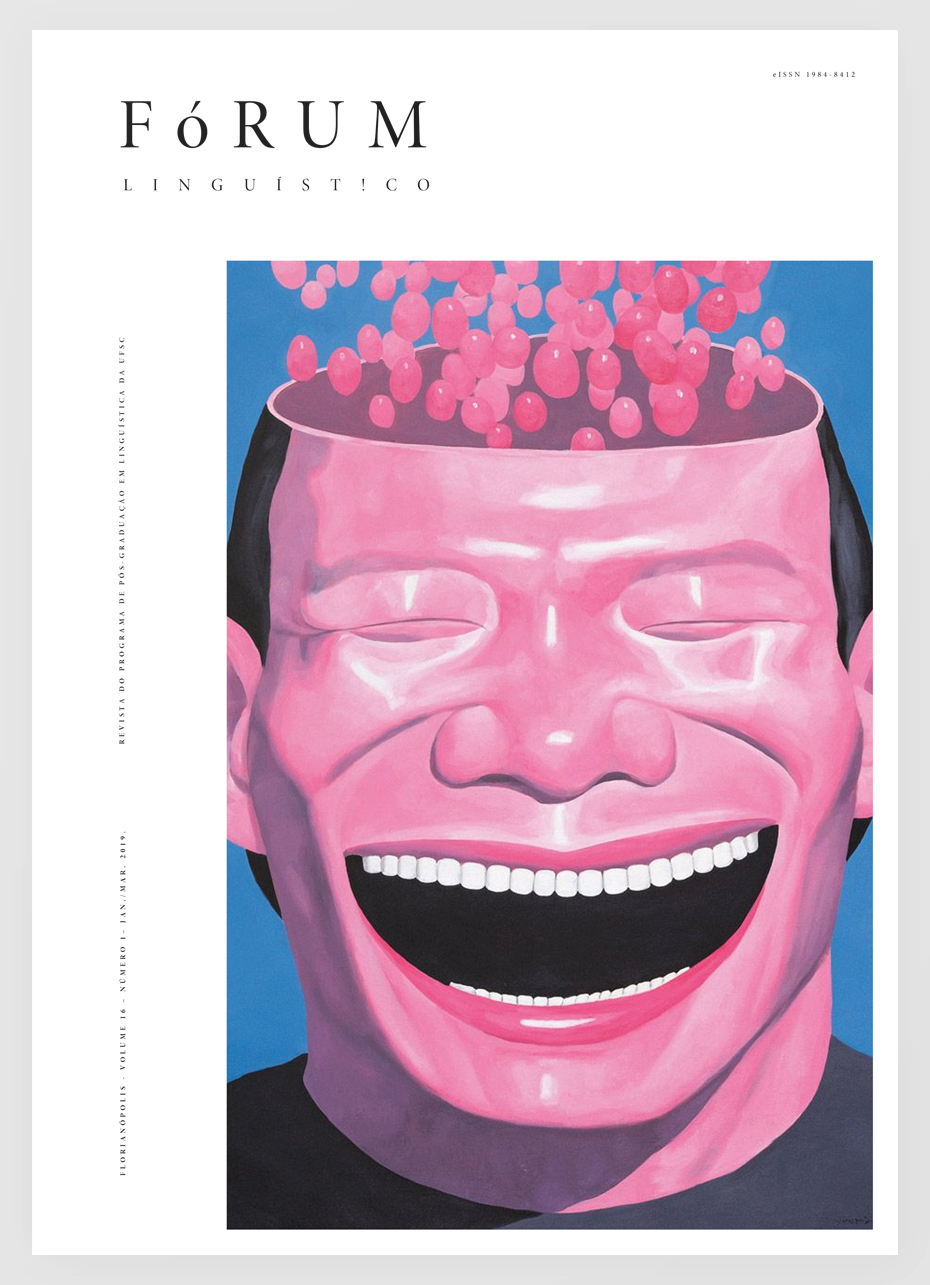Null objects/full pronouns and topicality in Brazilian Portuguese
DOI:
https://doi.org/10.5007/1984-8412.2019v16n1p3482Abstract
It is a well-known fact that Brazilian Portuguese (BP) allows null objects whose antecedents are inanimate. However, there are certain sentences that seem to defy this generalization. These sentences also allow full pronouns in the position of the object. In the present work, I argue that the gap in these sentences is not the typical null object of BP, that is, there is no DP ellipsis. The question, then, is how to differentiate them (i) from those containing the true null object;; and (ii) from those that only allow the full pronoun. To discuss these issues, the present paper follows the generativist framework and builds on recent proposals for different types or topics from a cartographic perspective (FRASCARELLI; HINTERHÖLZ 2007). By comparing BP null objects to Hebrew null objects (ERTESCHIK-SHIR et al. 2013), I assume that different types of topics must be distinguished in terms of their role in discourse. BP, however, is not similar to Hebrew with respect to the Topic Drop phenomenon. This discussion grounds the proposal on the distribution of the null object and full pronoun in BP advanced in this work. The paper intends to contribute to the discussion about the null object / full pronoun alternation in BP.
References
CARNIE, A. A phase-geometric approach to multiple marking systems. In: MCGINNIS, M.; RICHARDS, N. Perspectives on phases. MIT Working Papers in Linguistics, v. 49, p. 87-102, 2005.
CYRINO, S. O objeto nulo no português brasileiro: um estudo sintático-diacrônico. 1994. Tese (Doutorado em Linguística) – Universidade Estadual de Campinas, Campinas. 1994.
CYRINO, S. O objeto nulo no português brasileiro: um estudo sintático-diacrônico. Londrina: Editora da UEL, 1997.
CYRINO, S. Animacy and null objects in Brazilian Portuguese. Paper presented at the Stony Brook University Department of Linguistics Colloquium Series. February 26, 2016.
CYRINO, S. On animacy restrictions for the null object in Brazilian Portuguese. In: HELLAN, L. ; MALCHUKOV, A.; CENNAMO, M. Contrastive studies in verbal valency. Amsterdam: John Benjamins, 2017. p. 279-298.
CYRINO, S. O objeto nulo no português brasileiro: sincronia e diacronia. In: ROBERTS, I.; KATO, M; GALVES, C. Português brasileiro: uma segunda viagem diacrônica, to appear.
CYRINO, S.; LOPES, R. Null objects are ellipsis in Brazilian Portuguese. The Linguistic Review, v. 33, n. 4, p. 483-502, 2016.
DUARTE, E. Variação e sintaxe: clítico acusativo, pronome lexical e categoria vazia no português do Brasil. 1986. Dissertação. (Mestrado em Linguística) – Pontifícia Universidade Católica, São Paulo, 1986.
ERTSCHIK-SHIR, N; IBNBARI, L.; TAUBE, S. Missing objects as topic drop. Lingua, v. 136, p. 145-169, 2013.
FIENGO, R.; MAY, R. Indices and identity. Cambridge, Mass: MIT Press, 1994.
FRASCARELLI, M.; HINTERHÖLZ, R. Types of topics in German and Italian. In: SCHWABE, K.; WINKLER, S. On information structure, meaning and form: generalization across languages. Amsterdam: John Benjamins, 2007. p. 87-116.
HUANG, C-T. J. On the distribution and reference of empty pronouns. Linguistic inquiry, v. 15, n.4, p. 531-574, 1984.
IRIMIA, M.; CYRINO, S. Unifying differential marking: from Brazilian Portuguese to adpositional DOM. Revue Roumaine de Linguistique, LXII v. 4, p. 411-426, 2017.
LOBECK, A. Ellipsis: functional heads, licensing and identification. New York: Oxford University Press, 1995.
LÓPEZ, L. Indefinite objects: scrambling, choice functions, and differential marking. Cambridge: MIT Press, 2012.
KATO, M. Null objects, null resumptives and VP-ellipsis in European and Brazilian Portuguese. In: QUER, J. et al. Romance Languages and Linguistic Theory. Amsterdam: John Benjamins, 2003. p. 131-154.
KAYNE, R. Overt vs. Covert Movement. Syntax, v. 1, p. 128-191, 1998.
MACDONALD, J. The syntactic nature of inner aspect: a minimalist perspective. Amsterdam: John Benjamins, 2008.
MACHADO, D. M. S. O tópico no discurso oral: Anotação de diferentes tipos de tópico num corpus de discurso oral. 2010. Dissertação (Mestrado em Linguística) –
Universidade do Porto, Porto, 2010.
MENUZZI, S.; ROIZEMBERG, G. Tópicos contrastivos e contraste temático: um estudo do papel discursivo da “articulação informacional”. Caderno de Estudos Linguísticos, Campinas, v. 52, n. 2, p. 233-253, jul./dez. 2010.
ORDOÑEZ, F.; ROCA, F. Differential Object Marking (DOM) and clitic subspecification in Catalonian Spanish. In: GÁLLEGO, A. The Syntactic Variation of Spanish Dialects. Oxford: Oxford University Press, to appear.
ORMAZABAL, J.; ROMERO, J. The object agreement constraint. Natural Language & Linguistic Theory, v. 25, n. 2, p. 315-347, 2007.
ÖSTÜRK, B. Non-configurationality: free word order and argument drop in Turkish. In: BIBERAUER, T. The limits of syntactic variation. Amsterdam: John Benjamins, 2008. p. 411-440.
RAPOSO, E. On the null object in european Portuguese. In: JAEGGLI, O.; SILVA-CORVALÁN, C. Studies in Romance Linguistics. Dordrecht: Foris, 1986. p. 373-390.
RICHARDS, M. . Defective agree, case alternations and the prominence of person. In: RICHARDS, M.; MALCHUKOV, A. Scales. Linguistiche Arbeits Berichte, Universität Leipzig, v. 86, p. 137-161. 2008.
RIZZI, L. 1997. The fine structure of the left periphery. In: HAEGEMAN, L. Elements of grammar. Dordrecht: Springer, 1997. p. 281-337.



